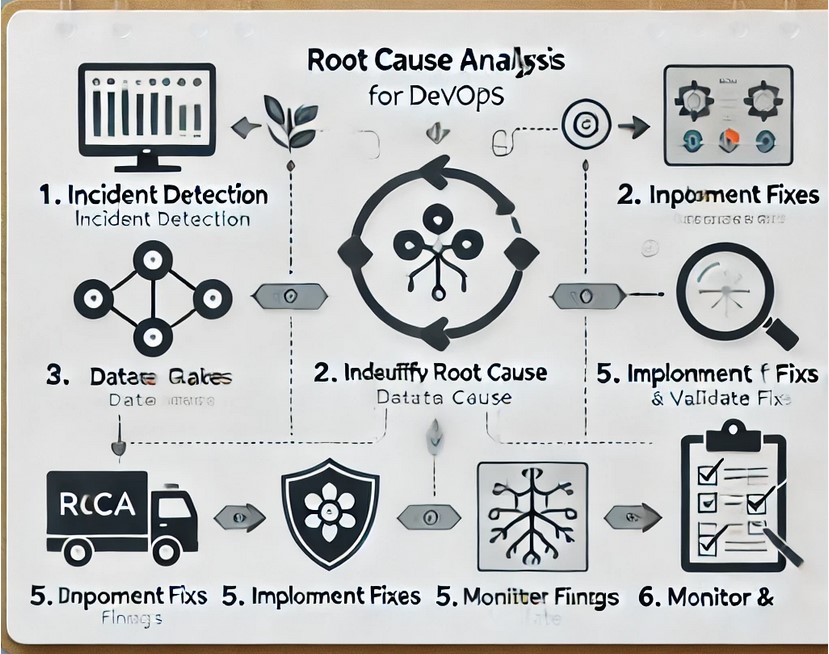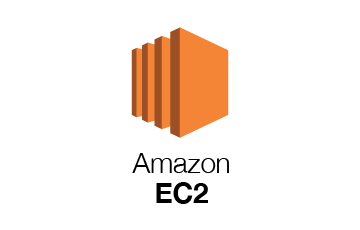Introduction
In the fast-paced world of DevOps, system failures and incidents are inevitable. However, how teams handle these incidents defines the efficiency and reliability of their infrastructure. Root Cause Analysis (RCA) is a crucial process that helps identify, document, and resolve the underlying causes of these failures to prevent future occurrences. In this guide, we will delve deep into RCA best practices, step-by-step methodologies, and real-world applications for DevOps teams.
What is Root Cause Analysis (RCA)?
Root Cause Analysis (RCA) is a structured approach used to identify the fundamental cause of an incident, rather than just fixing its symptoms. In DevOps, RCA helps improve system stability by analyzing failures and implementing corrective measures.
Why is RCA Important in DevOps?
- Prevents Recurring Issues: Identifies the true cause of failures and eliminates them permanently.
- Improves System Reliability: Enhances uptime and availability by addressing the root issues.
- Reduces Operational Costs: Prevents costly downtime and mitigates risks.
- Enhances Collaboration: Encourages cross-functional teams to work together in incident resolution.
- Supports Continuous Improvement: Enables proactive measures and iterative enhancements.
Step-by-Step RCA Process
1. Incident Detection and Initial Response
When an incident occurs, it’s critical to detect it early using monitoring tools like Prometheus, New Relic, or Datadog. The response team should:
- Acknowledge the incident.
- Categorize its severity.
- Notify relevant stakeholders.
- Contain the issue to prevent further damage.
2. Data Collection and Investigation
Gather comprehensive data to analyze the incident effectively. This includes:
- Application and system logs.
- Performance metrics and monitoring dashboards.
- CI/CD deployment history.
- Recent infrastructure changes.
- User-reported issues.
3. Identify the Root Cause
Use the following techniques to determine the underlying issue:
- The 5 Whys: Repeatedly ask “Why?” to drill down into the problem.
- Fishbone Diagram (Ishikawa): Categorizes causes into groups such as software, hardware, process, and human factors.
- Change Analysis: Examines recent changes in code, configuration, or infrastructure.
- Blameless Post-Mortem: Encourages open discussion without finger-pointing.
4. Implement Corrective Actions
Once the root cause is identified, implement the following:
- Immediate Fixes: Quick resolutions to restore functionality.
- Long-Term Fixes: Code or infrastructure changes to prevent recurrence.
- Process Improvements: Adjustments to workflows, CI/CD pipelines, or monitoring configurations.
5. Document Findings and Share Knowledge
Create a well-documented RCA report including:
- Incident Summary
- Timeline of Events
- Root Cause
- Resolution Steps
- Preventive Measures
- Lessons Learned
Sharing this document within the team promotes transparency and learning.
6. Monitor and Validate Fixes
After implementing changes, continuously monitor systems to:
- Validate the effectiveness of fixes.
- Detect any regression issues.
- Improve automation for future incident handling.
Real-World RCA Example
Incident: Application Downtime in Production
Symptoms: Users experienced 503 Service Unavailable errors on a web application.
RCA Investigation:
- Logs Analysis: Nginx logs showed high latency and failed upstream connections.
- Database Inspection: Increased query execution times were detected.
- Change Review: A recent database migration had altered table indexing.
- Root Cause Identified: The new index caused slow queries, leading to DB connection exhaustion.
Resolution:
- Rolled back the database migration.
- Optimized indexing strategy and query execution plans.
- Increased monitoring alerts for slow queries.
Preventive Actions:
- Enhanced testing of database migrations in staging.
- Implemented database query performance monitoring.
- Improved alerting mechanisms to detect slow queries earlier.
Best Practices for Effective RCA in DevOps
- Automate Monitoring & Alerts: Use tools like Prometheus, Grafana, ELK Stack, and New Relic.
- Enable Centralized Logging: Implement a logging solution such as Fluentd, Loki, or Splunk.
- Maintain a Knowledge Base: Store past RCA reports to accelerate future resolutions.
- Foster a Blameless Culture: Encourage open discussions without assigning blame.
- Regular Incident Drills: Conduct simulations to test response effectiveness.
Conclusion
Root Cause Analysis is a critical process for ensuring system stability and reliability in DevOps. By following structured methodologies, documenting findings, and implementing long-term preventive measures, organizations can minimize downtime and improve operational efficiency. RCA should be an ongoing practice, evolving with system complexity and emerging technologies.







